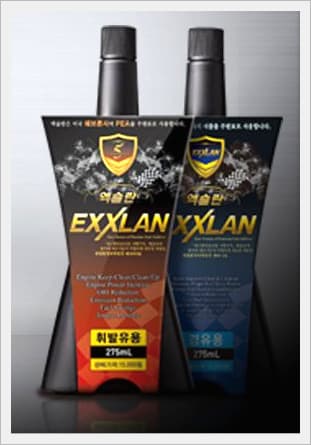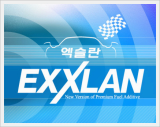EXXLAN Gasoline
Negotiable Min Order Quantity Unit
- Required Quantity
-
- Place of Origin
- Payment Terms
- Negotiable
- Production method
- Negotiable
- Shipping / Lead Time
- Negotiable / Negotiable
- Keyword
- Category
- Machinery Engines & Parts
Daeheung Chemical Co., Ltd.
- Country / Year Established
-
 South Korea
/
South Korea
/
- Business type
- Others
- Verified Certificate
-
16

| Product name | EXXLAN Gasoline | Certification | - |
|---|---|---|---|
| Category | Machinery Engines & Parts | Ingredients | - |
| Keyword | - | Unit Size | - |
| Brand name | - | Unit Weigh | - |
| origin | Stock | - | |
| Supply type | - | HS code | - |
Product Information
EXXLAN GASOLINE
The following information is the property of Chevron Oronite. It is supplied here exclusively for the purpose of gaining approval by Korean EPA. This information must not be supplied to any third party or released outside of Korean EPA without the express written consent of Chevron Oronite
|
COMPONENT
|
CAS Number
|
Wt.%
|
|
2-aminoethanol, ethoxylated,
propoxylated |
6894-29-0
|
33.9
|
|
Unsat(C=18) and (C=14-18)
Branched and linear alkylamines |
85711-40-6
|
14.0
|
|
Kerosene
|
8008-20-6
|
32.8
|
|
N,N-Bis(hydroxyethyl)
Cocoamides |
-
|
4.2
|
|
Elemental Analysis : C:61.4%, H:13.3%, N:12.7%, O:12.6%
|
||
EXXLAN GASOLINE PERFORMANCE BENEFITS
When used at 4,500 weight parts per million in gasoline, EXXLAN Gasoline provides the following performance benefits.
EXXLAN GASOLINE is multi-functional gasoline additive that has two main performances.
- Performance of Cleaning the deposits in gasoline engine system
Deposits form in an engine during its normal course of operation. Although a brand new engine has no deposits, actual operation leads to deposits being formed the incomplete combustion of fuel of poor quality, and the normal introduction of lubricating oil into the fuel system through areas such as intake valves.
Engine designers anticipate a certain amount of deposit formation. However, excess deposit formation can cause severe operating problems. Even microgram amount of deposits in the fuel injector area can interfere with the poorer fuel spray which is critical for proper combustion. This results in fuel economy loss, reduced power and acceleration, and can lead to engine failure. EXXLAN GASOLINE is extremely effective at removing these deposits and eliminating those problems. More fundamentally, EXXLAN GASOLINE also prevents the initial formation of deposits.
Deposits on the intake valves can interfere with the normal introduction of fuel into the combustion chamber. Small amount of intake valve deposits can absorb fuel before it enters the combustion chamber, thereby reducing fuel economy. The fuel can then evaporate and enter the engine at the wrong time in the engine cycle, leading to high emission. Large amounts of intake valve deposits can physically interfere with the fuel spray pattern.
EXXLAN GASOLINE prevents deposit formation on intake valves and also removes existing intake valve deposits, therefore returning the engine to its original operating condition.
Many types of gasoline additives used to maintain engine cleanliness in the intake valve area themselves cause large amount of deposits in the combustion chamber. These combustion chamber deposits can interfere with the movement of the piston, leading to a condition known as chamber 'rap' from the piston colliding with the deposits formed inside the combustion chamber.
These deposits also form as insulating layer in the combustion temperatures and increase the emission of NOx, which is formed at high temperatures. In addition, the insulating layer of combustion chamber deposits can lead to the formation of localized 'hot spots' inside the combustion chamber.
These cause incorrect ignition of the fuel, and the use of higher octane fuel to prevent this occurrence (this is called Octane Requirement Increase or ORI). However, EXXLAN GASOLINE does not form these combustion chamber deposits and can reduce the amount of these deposits. In this way, EXXLAN GASOLINE reduces emissions of NOx, increase fuel economy, and allows the use of lower octane fuel for satisfactory performance - Improve fuel economy by reducing the friction in the engine
Up to 50% of engine friction occurs in the upper cylinder area of a gasoline engine. This area is characterized by high temperatures and pressures due to the combustion event. While friction has been reduced in other parts of the engine by using roller followers and improved bearings, the amount of friction in the upper cylinder area has actually increased because of the use of tighter rings to reduce engine blow-by and emissions. Therefore, reduction of friction in this area offers a significant opportunity to reduce engine power loss and therefore improve engine fuel economy, power, and acceleration.
The materials known as friction modifiers have been added to lubricating oil since the 1970s. Some of these additives are organic, and some contain metals such as molybdenum. However, all of these additives form deposits if they are introduced into the upper cylinder area because they either do not burn or they leave metallic ash when burned. In addition, these additives are not fully soluble in gasoline.
But, the component in EXXLAN GASOLINE is unique. It is fuel additive that provides friction benefits in the upper cylinder area without causing any deposits. It is a product which is patented in the USA for this unique combination of performance.
By reducing friction in the upper cylinder, EXXLAN GASOLINE can provide 'better-than-new' fuel economy. Even in a brand new, clean engine, EXXLAN GASOLINE reduces engine friction and improves fuel economy, power, and acceleration. EXXLAN GASOLINE provides this benefit even when used in an engine that also is using high-quality lubricant with its own beneficial friction properties. This is because the lubricant friction agent is not effective in the upper cylinder area.
METHOD OF ANALYSIS FOR EXXLAN GASOLINE IN GASOLINE
General Approach :
-
As the typical amount of EXXLAN GASOLINE in gasoline is quite small (less than 1500 parts per million), some type of concentration technique is recommended to separate EXXLAN GASOLINE from other components. The normal approach is to use a silica gel chromatographic method to separate EXXLAN GASOLINE and other similar naturally-occurring materials from the fuel, and then to characterize and quantitatively analyze the extracted material using Fourier Transform InfraRed (FTIR) comparison to a standard EXXLAN GASOLINE sample.
Apparatus
- Chromatography column, silica gel, 2-3 feet long, various suppliers
- Activated silica gel
- Various solvents : Petroleum ether, carbon tetrachloride, methanol, n-heptane
- Fourier Transform apparatus
- Standard samples of EXXLAN GASOLINE
Procedure :
-
Approximately eight grams of fuel are introduced to the chromatographic column containing the activated silica gel. The initial wash uses petroleum ether. A second was uses methanol. The amount of solvents depends on the characteristics of the column, so typically some samples of diesel fuel containing known amounts of EXXLAN GASOLINE are used to calibrate the column. The ether and methanol fractions are collected and reduced at room temperatures in a vented hood.
The residue from these fractions are dissolved in n-heptane and FTIR scans are taken and c0mpared to standard FTIR samples. Typically, some EXXLAN GASOLINE is in each fraction and the amounts of EXXLAN GASOLINE in each fraction are combined. The main comparison peak is carbonyl peak, but in case of impurities other peaks typical of EXXLAN GASOLINE may be used for comparison.
MECHANISM OF ACTION
EXXLAN GASOLINE is multi-functional gasoline additive which is used to improve the performance of gasoline. EXXLAN GASOLINE contains a unique combination of ingredients that provides several different types of performance.
One type of mechanism is to protect surfaces of critical engine parts such as port fuel injectors, intake valves, combustion chambers, and exhaust valves from the accumulation of deposits. These deposits can result from unburned fuel, unburned lubricant that leaks into the fuel system, and other contaminants. EXXLAN GASOLINE protects the surfaces by forming a protective coating on these surfaces.
A second mechanism is to remove deposits which already exist. This requires an aggressive surfactant-type activity, so that EXXLAN GASOLINE loosens the existing deposits so that they can be removed by normal fuel flow.
By removing accumulation of deposits and removing existing deposits, use of EXXLAN GASOLINE returns the gasoline engine to its original operating condition. This restores fuel economy, power, acceleration, and overall operating performance, and also reduces emissions as compared to the engine with deposits
EXXLAN GASOLINE also has a surface-active material which is soluble in gasoline and provides lubricity protection to critical metal surfaces in the upper combustion chamber and the piston and ring areas of the cylinders of a gasoline engine. EXXLAN GASOLINE provides a protective film that prevents metal-to-metal contact in these areas of high temperature and high pressures. The use of EXXLAN GASOLINE to reduce the friction in upper cylinder area is extremely effective at reducing these friction losses and improving the fuel economy of the engine.
B2B Trade
| Price (FOB) | Negotiable | transportation | - |
|---|---|---|---|
| MOQ | Negotiable | Leadtime | Negotiable |
| Payment Options | Negotiable | Shipping time | Negotiable |
- President
- lee, jae-yong
- Address
- 757-6, Yeocheon-dong, Nam-guUlsan,
- Product Category
- Chemical Product Agents
- No. of Total Employees
- 51-100
- Company introduction
-
Our company is the manufacturer and wholesaler of chemical agents. We are also doing the agent of Samsung Fine Chemicals Co., Ltd. We are handling various kinds of item such as Ammonia 25%, Sodium Hydroxide 50%, Urea for industrial use, Melamin, High Polymer Flocculant and Bicarbonate Ammonium for industrial use and food use.
- Main Product
Related Products
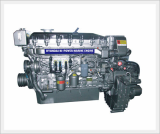
Marine Diesel Engine (D6CC)
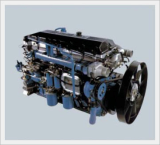
Engine(D6CA)
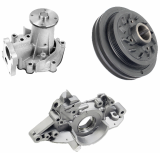
WATER PUMP OIL PUMP DAMPER PULLEY
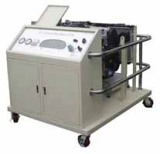
EF LGP Engine Simulation
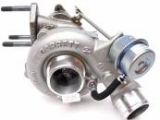
OEM Parts Aftermarket Parts


































